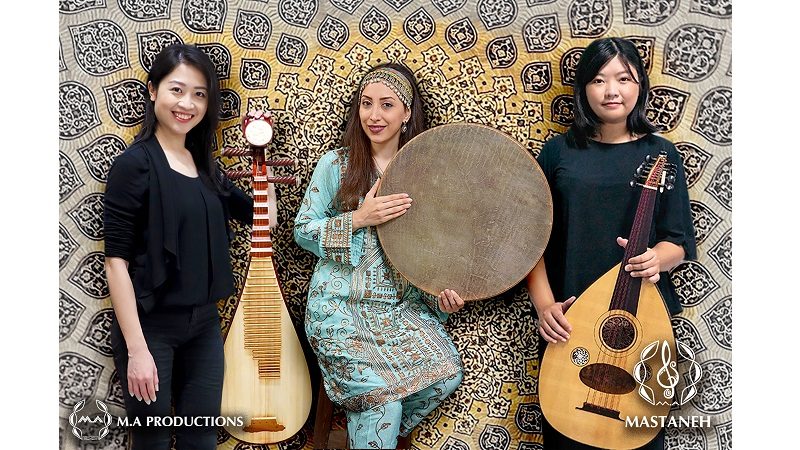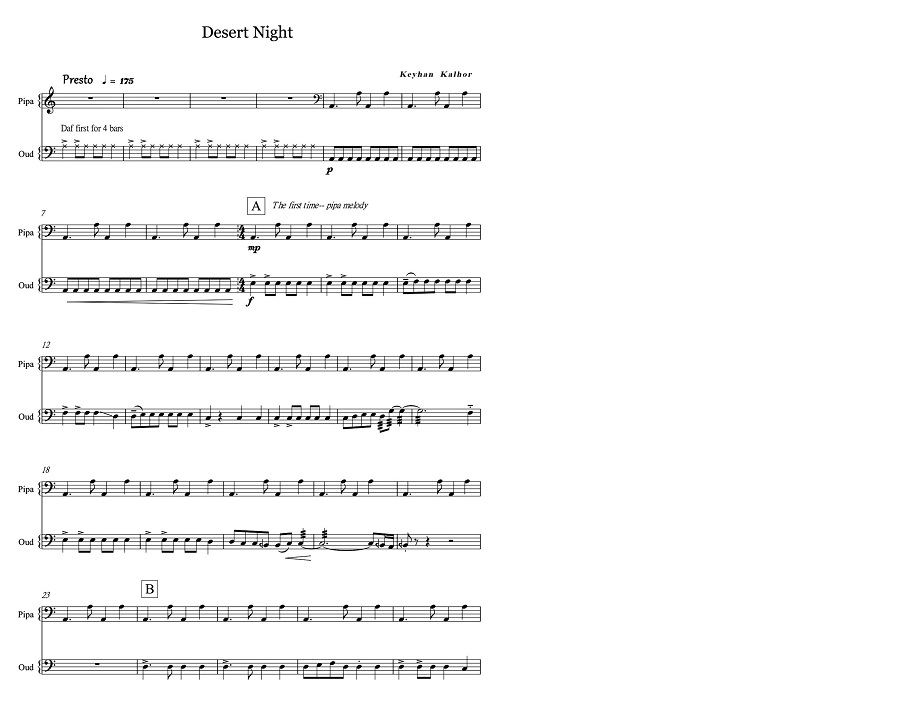A Performance Merging Two Civilizations 2/5
Interview: Mona Kaveh Ahangari and Ali Montazami (co-founders of M.A PRODUCTIONS) speak with Music Press Asia’s editor-in-chief Monica Tong to uncover the cultural influences of these traditional instruments and why it is important to keep them alive.
Interview: Mona Kaveh Ahangari and Ali Montazami (co-founders of M.A PRODUCTIONS) speak with Music Press Asia’s editor-in-chief Monica Tong to uncover the cultural influences of these traditional instruments and why it is important to keep them alive.

Return to the previous page
2. What truly captivated us in the beginning, even before we heard the music, was an ensemble using a Chinese instrument – pipa, and two Iranian – Barbat (oud) and daf. Tell us why these instruments and their sounds go so well together?
A Montazami: Although Pipa is a Chinese traditional musical instrument all these three instruments of Daf, Barbat (Oud), and Pipa are family members with roots in Persian music through a long history. Daf and Barbat are originated in Iran between 1400 to 2000 years ago and for multiple periods of history, they have performed together. Therefore, the harmony of Daf and Barbat is a result of growing these instruments in the same music structure, Persian music, and also their long time performing together.
On the other hand, Pipa is also a relative to Barbat and according to (Kishibe, 1940; Myers, 1992; Zhuang, 2001), Persian Barbat is the ancestor of Pipa. So, when the Pipa joins Barbat and Daf, the family roots between Pipa and Barbat make a harmonic combination in our songs.
In addition, the specific sound of Pipa is similar to some Iranian traditional string musical instruments such as Setar, Tanbour, and Santoor. Then the role of Pipa in MASTANEH is also to represent the sound of some Iranian musical instruments.
However, despite that Pipa is a relative to Barbat and Iranian music structure, the structure of this instrument has been massively transformed to merge in Chinese traditional music through thousands of years. Therefore, performing Iranian music using Pipa is an extremely challenging mission. For each original Persian song that we chose to perform, we need to do rearrangement to firstly optimize the number of the instruments to our three instruments, secondly, to reshape the song to possibly play it by Pipa.

2.1 Walk us through the process of merging the instruments, arranging, and finally playing a musical arrangement of Iranian origin. How does it all come together for MASTANEH?
MK Ahangari: Iranian traditional music has a specific structure called “Dastgah” and it is totally different from Chinese music structure. Pipa is structured to play Chinese music, therefore, for each Persian song we need to find the solution to use Pipa for performing that song. For example, the vibrations of Persian and Chinese music are different, the accents are different too, also the quarter tones (Koron and Sori tones) are the most important parts of Iranian traditional music which don’t exist in Pipa’s sound range.
In addition to rearranging the song to possibly play it using Pipa, we need to consider the personality and abilities of Pipa and Barbat to replace some instruments in the original song too. Because the original song may be composed to perform by several different instruments while we have only three instruments in MASTANEH.
Barbat (Oud) has a lower pitch but Pipa usually plays in a higher range, on the other hand, the main difference between Pipa and Barbat is that the tone of Pipa is designed by Equal Temperaments while Barbat doesn’t play in this tone. Also, to cover the rhythms and all percussions in the original song, we need to rearrange the song to be performed by only one percussion instrument, Daf.
A Montazami: Another challenge for us goes to the familiarity of our band members from Taiwan with Persian music and its specific structure. Our band members from Taiwan are highly professional and university-educated musicians but as Persian music is not taught in the universities or institutes of Taiwan, it was a breathtaking challenge to our members to learn this structure and the skill to play in Persian music style.
Selecting different Iranian songs with various Persian musical styles is our approach to make our members more familiar with these structures and differences. It is highly appreciable that how our Barbat and Pipa performers put effective efforts in this way which enabled us to make such a combination of two great Persian and Chinese cultures through our music in MASTANEH.
Click to read page (3)




